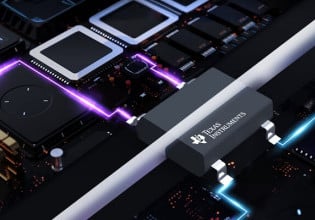Thermal energy harvesting is an emerging technology increasingly-used for powering sensors in the Industrial Internet of Things (IIoT). Recently, thermal energy harvesting has been identified as a possible solution to the ban of Li-ion batteries in smart suitcases by all major airlines.
"For smart luggage, if you strip away the power block feature, the capability to power or charge your personal portable electronic devices, and strip it back to what I understand to be important features like tracking, weighing and locking, the electronics to do those features are substantially reducing in power," observed George Brocklehurst, Research Director for Power and Energy at Gartner.
"You have emerging technologies such as microcontrollers operating at very low voltages that significantly reduce power requirements. With those developments, I can see how alternative powering technologies other than Lithium-ion batteries may be possible," Brocklehurst concluded.
If energy harvesting is considered; it comes down to the suitability of the energy harvesting technology for specific uses. Conventional thermal energy harvesters require both significant thermal gradients and the use of a bulky heatsink for operation. For the IIoT, bulky solutions such as those are not a problem, but that type of energy harvesting is probably not suitable for luggage, according to Brocklehurst.
Even in IIoT applications: "Trade-offs of availability are not well received for energy harvesting solutions. Light is not always available for photovoltaic harvesters, adequate thermal gradients may not be reliably available for thermal harvesters. Those trade-offs of availability are one of the biggest challenges to the adoption of energy harvesting in many cases," Brocklehurst observed.
Recently, a new way to harvest thermal energy was announced. that addresses both of the concerns related to conventional thermal harvesters cited by Brocklehurst. Evercell™ power cells are very thin (a millimeter or less) and light weight and have no need for measurable thermal gradients. Evercell™ is a passive-structure, semiconductor-based thermal energy harvester that exploits principles of quantum physics to produce a small, continuous flow of electric power in virtually any setting. They consume no fuel, have no moving parts, contain no toxic materials, and require no exposure to other stimuli, including motion, pressure, RF or electromagnetic energy.
"The Evercell™ sounds promising. I can't comment on the physics, but if it gets into production, it sounds very exciting and, accompanied by ultra-low power microprocessor technology, could be an enabling technology," stated Brocklehurst. "I'm adding Face to the list of thermal energy harvester vendors in the next edition of Gartner's Hype Cycle report that is scheduled for publication in August."
 Hype Cycle for Semiconductors and Electronics Technologies, 2017 (copyright, 2017, Gartner, Inc.) (click on image to enlarge)
Hype Cycle for Semiconductors and Electronics Technologies, 2017 (copyright, 2017, Gartner, Inc.) (click on image to enlarge)
Technologies included in Gartner's Hype Cycle are selected on the basis of current market momentum, industry interest and analyst preference. These technologies are yet to be widely adopted in order to develop their value proposition, but Gartner views these technologies as having significant potential in the future.
Thermal energy harvesting has been identified in Gartner's Hype Cycle as one of a handful of "Innovation Triggers" that will "offer substantial rewards for those organizations that can successfully leverage their value proposition in enabling killer applications."
"Compared with traditional reports that focus on technology forecasts, I took a slightly different tack for my energy harvesting analysis. I wanted to establish a framework for understanding the ROI [Return on Investment] for users of the technology," Brocklehurst stated.
"I developed a framework from our downstream research resources looking at things like battery management costs, engineering time, down time, quality of service, and specific energy harvesting operational parameters and characteristics. That ROI modeling has been the main focus of my energy harvesting research and Hype Cycle reporting," Brocklehurst explained.
ROI modeling applied to smart luggage may result in extending the utility of the technology beyond consumer benefits such as tracking, self-weighing, lock status and remote locking/unlocking. The overall airline industry may find cost-saving opportunities for luggage handling in general.
"Beyond the troublesome safety issue, the baggage handling industry recognizes that even the highest technology standards now broadly employed - such as barcodes and RFIDs - are not a satisfactory solution for handling the billions of bags checked every year," commented Brad Face, CEO of The Face® Companies, developers of the Evercell™ power cell technology. "The industry wants to employ more efficient tracking technology across all handled baggage - not just the high-end smart suitcases."
"Only Evercell™ can support a battery-free wireless tracking system that does not require the scanning of each individual piece of baggage," Face concluded.






